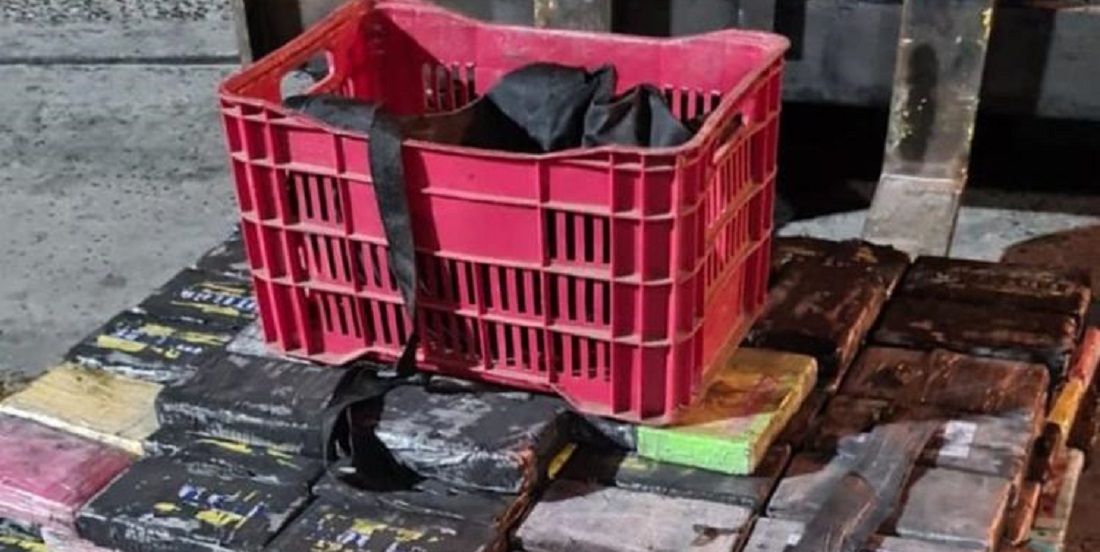
Cocaine trafficking: Northeastern ports used as gateway to Europe
Jun, 20, 2023 Posted by Gabriel MalheirosWeek 202324
In operations to fight drug trafficking, the Brazilian Federal Police seized a minimum of 26.8 tonnes of cocaine in ports located in the country’s Northeastern region between 2018 and 2022, amounting to approximately R$5.1 billion at the current dollar exchange rate. The drugs were bound for Europe, as reported by the Tribuna do Norte website based in Natal.
“After a year-round investigation, the Federal Police and Public Prosecutors Office (MPF) have jointly indicted a young man and 54 others in the Federal Court on charges of criminal organization and international drug trafficking. The accusation report, filed in September 2022, reveals that the group, primarily composed of individuals from São Paulo, is just one among several gangs using Natal and other Northeastern ports as a convenient route to transport cocaine to European countries such as the Netherlands, Belgium, and even African nations,” explains the article.
The publication also highlights several reasons that have contributed to the Port of Natal and other Northeastern ports becoming popular routes for cocaine drug trafficking. These factors include the absence of non-invasive container inspection scanners, increased seizures and inspections at the Port of Santos (Brazil’s largest port), and the proximity of the Northeastern ports to Europe compared to other ports.
Ceará involvement
For instance, in 2018, a total of 1,685 kilograms of cocaine were seized in Salvador (1,662 kg) and Fortaleza (23 kg), accounting for 5% of the 33,315 kilograms confiscated in Brazilian ports. Over the years, as criminal organizations developed, drug trafficking in the Northeast has grown significantly. In 2019, at least 9,084 kilograms were seized (5,645 kg in Natal and 3,439 kg in Salvador) out of a total of 60,901 kilograms (14%).
In 2020, the state in the Northeast with the highest number of drug seizure episodes was Bahia, with 8,306 kg in Salvador and 2,078 kg in Ilheus, amounting to 19.4% of the total 53,316 kilograms taken by the authorities. In 2021, Natal appeared in the top six, being the sole Northeastern port in the list, with 2,400 kilograms of cocaine seized out of 45,910 kilograms. Last year, the port seizures in the Northeast occurred in Aracaju (1,303 kg) and Fortaleza (1,281 kg), accounting for 8% of the 29,265 kilograms seized across Brazilian ports.
The group exposed by the Prosecutors Office (MPF) mainly consisted of individuals from São Paulo but chose to centralize their operations in Rio Grande do Norte, with branches in the ports of Santos, Salvador, Fortaleza, and Belém. According to the accusation, the group utilized containers carrying different types of products, which they “contaminated” with drugs.
Ranking of Cocaine Seizures:
Seizures in the Port of Natal (PF/RN Data):
2019: 4,441.39 kg
2021: 2,441.80 kg
2020: 703.95 kg
2023: 29.93 kg
2022: 0 kg
Total: 7,567.14 kg
Seizures in Northeast Ports (Federal Police Data):
2020: 11,087 kg (Salvador/BA, Ilheus/BA, and Natal/RN)
2019: 9,084 kg (Natal/RN and Salvador/BA)
2022: 2,584 kg (Aracaju/SE and Fortaleza/CE)
2021: 2,400 kg (Natal/RN)
2018: 1,885 kg (Salvador/BA and Fortaleza/CE)
Total: 26,840 kg
-
Blog News (ENG)
Nov, 10, 2022
0
China reduces input of Brazilian soybeans by 10% in 2022
-
Ports and Terminals
Apr, 01, 2020
0
Infrastructure Ministry forms agreement to solve problem of Portus pension fund deficit
-
Ports and Terminals
Nov, 14, 2023
0
Antaq opens public consultation on Paranagua’s access channel concession
-
Ports and Terminals
Aug, 18, 2021
0
Antaq opens public consultation on area leasing in the Port of Santos


